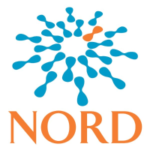From the Editor…
 I have been working on a revision of the PRP Report in the Rare Disease Database hosted by the National Organization of Rare Disorders. Writing about the “CAUSES” of pityriasis rubra pilaris is particularly challenging.
I have been working on a revision of the PRP Report in the Rare Disease Database hosted by the National Organization of Rare Disorders. Writing about the “CAUSES” of pityriasis rubra pilaris is particularly challenging.
Do we know what causes PRP? Much to the frustration of the PRP community, the answer is “No”, although genetic factors, an abnormal immune response, or vitamin A deficiency may be involved.
Based on conversations within the PRP community, we can say with metaphysical certitude that PRP isn’t a punishment for misbehavior or forgetting to put the seat down on a toilet (loo in some parts of the world). There are thousands of perfectly wonderful people who have – or had – PRP. Moreover, there are many very bad people who don’t have it. When asked, we can say: “The cause of PRP is not known. It’s a missing piece in our puzzle.”

The current version of the NORD PRP Report states: “The specific underlying cause of PRP is unknown.” This statement remains remains as correct today as it was reviewed in 2007.
The description offers an additional 208 words with phrases such as “may be hereditary or acquired”, “for no known reason”, “evidence suggests”, “may be inherited” and “may result from”.
“Researchers indicate that the condition may be hereditary or acquired. In many patients, PRP appears to occur randomly for no known reason (sporadically). However, in some affected individuals, evidence suggests that the disorder may be inherited as an autosomal dominant trait. Human traits, including the classic genetic diseases, are the product of the interaction of two genes for that condition, one received from the father and one from the mother.
“Dominant genetic disorders occur when only a single copy of an abnormal gene is necessary to cause a particular disease. The abnormal gene can be inherited from either parent or can be the result of a new mutation (gene change) in the affected individual. The risk of passing the abnormal gene from an affected parent to an offspring is 50% for each pregnancy. The risk is the same for males and females. In some individuals, the disorder is due to a spontaneous (de novo) genetic mutation that occurs in the egg or sperm cell. In such situations, the disorder is not inherited from the parents.
“Some researchers suggest that PRP may result from abnormalities in vitamin A metabolism. (Metabolism refers to the chemical processes occurring in the body.) However, such research has not been definitive, necessitating further investigation.” (1)
A cursory search of the Internet using “pityriasis rubra pilaris cause” generates a similar response.

FROM HEALTHLINE
The exact cause of PRP is unknown. PRP most often occurs for no clear reason. While SOME CASES of PRP are inherited, most are not. Inherited PRP tends to be more severe.
Classical adult onset PRP MAY BE linked with underlying skin cancer. However, how often skin cancer happens with this type of PRP is unknown. If you have classical onset PRP, make sure you see your doctor to check for skin cancer.
According to the National Organization for Rare Disorders, early research suggests that PRP may be due to a problem in the way the body processes vitamin A. However, more research is needed to figure out if this is true. PRP may also be connected to an immune system response, according to the Genetic and Rare Diseases Information Center. (2)
FROM GENETIC AND RARE DISEASES INFORMATION CENTER
FROM MEDSCAPE
The etiology is unknown. A familial form of the disease exists, with an autosomal dominant inheritance pattern. Type V pityriasis rubra pilaris has been linked to mutations in the gene, CARD. Most cases of pityriasis rubra pilaris are sporadic, however, one hypothesis is that pityriasis rubra pilaris may be related to an abnormal immune response to an antigenic trigger. Case reports have described pityriasis rubra pilaris occurring after streptococcal infections. (4)
FROM MEDLINEPLUS
There are many different types of pityriasis rubra pilaris. The cause is unknown, although genetic factors, an abnormal immune response, or vitamin A deficiency may be involved. (5)
FROM NEWS-MEDICAL.NET
The specific pathogenetic mechanisms that give rise to PRP are still unknown. There are studies that suggest it may be genetically acquired, while there are countless others that claim it is actually sporadic. Factors associated with the acquisition of the disease via the latter route involve metabolic abnormalities with the processing of vitamin A in the body. There have been some indications that PRP may also arise due to infections and rashes associated with burns. Another suspected trigger is stress and the condition, regardless of the cause implicated, is not suspected until therapies used for closely related conditions have failed. (6)
CONCLUSION
The primary audience for the NORD PRP Report are PRP patients, caregivers and families. There is, however, a secondary audience of physicians, researchers, nurses, students, journalists and others also request and benefit from NORD information. The latter secondary audience, however, could be better served with a more robust INVESTIGATIONAL THERAPIES section to the PRP Report.
❏½ “NORD’s reports are geared toward patients and families. Ideally, NORD reports are written as close to an 8th grade level as possible.
❏½ “When writing a NORD report, every effort should be made to keep the information as simple, straightforward and understandable as possible.”
❏½ “There is an important secondary audience. ”

